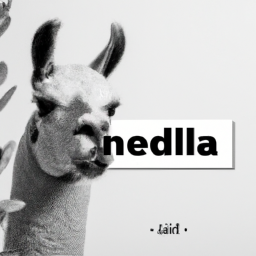Llama 2: Closing the Gap Between Open-Source and Closed-Source Language Models
Introduction

The OpenAI community has witnessed a surge in the development of language models, particularly in the open-source realm. Llama 2 is among the latest models that have garnered significant attention due to its potential to rival the renowned Chat GPT 3.5. In this article, we delve into the features and capabilities of Llama 2, comparing it to both closed-source models and other open-source alternatives.
Llama 2: A Promising Open-Source Language Model
Llama 2 is an open-source language model that has gained popularity among developers seeking alternatives to Chat GPT for work-related projects. The model offers a web frontend with authentication for Azure’s OpenAI API, allowing users to integrate it seamlessly into their applications. This advantage is particularly beneficial for those who cannot use Chat GPT or its API in their workplace.
Competition with Closed-Source Models
A significant debate within the AI community revolves around how Llama 2 compares to closed-source models like Chat GPT 3.5, GPT 4, Anthropic Claude 2, or Cohere’s model. Llama 2, with its 70B model parameters, has shown promise in rivalling Chat GPT 3.5 in various aspects. However, it falls short when compared to the larger closed-source models.
The Limitations of Open Source
Llama 2, as an open-source model, faces certain limitations when competing with closed-source models. Closed-source models, backed by substantial resources and highly skilled researchers, often outperform open-source counterparts due to better funding and access to vast amounts of data for training. While open source models have the potential to catch up in the long run, closed source models retain an edge in terms of research and development capabilities for now.
Fine-Tuning and Task-Specific Performance
Fine-tuning techniques play a crucial role in bridging the gap between Llama 2 and closed-source models. With the right approach, Llama 2 can excel at specific tasks such as coding or mathematical problem-solving. Fine-tuning has proven to be instrumental in enhancing the performance of Llama 2, making it a viable option for many use cases.
The Importance of Quality Benchmarking
Quality benchmarking remains a vital aspect when comparing different language models. It is essential to consider a wide range of benchmarks, including Big Bench Hard or OpenAI evals, to make well-informed judgments about model performance. Narrow benchmarks can limit the overall perspective and fail to reflect the true capabilities of a model.
Context and Specialized Training Data
An important factor in the performance of language models is the context provided and the quality of the training data. Closed-source models often boast extensive coverage across multiple domains and benefit from superior training data. This advantage can explain the performance gap between closed-source models and Llama 2.
Exploring Future Possibilities
The AI community anticipates that open-source models will eventually catch up with closed-source counterparts. The availability of high-quality research and the potential for liquidity among brilliant researchers are likely to drive further advancements in open-source models. However, the gap in resources and funding between closed and open models is currently difficult to offset.
Conclusion
Llama 2 emerges as a promising open-source language model that competes with closed-source counterparts. While it may fall short in various aspects, fine-tuning techniques have the potential to bridge the performance gap for specific tasks. The open-source community continues to make strides, and in the long run, they may ultimately surpass closed-source models. However, closed-source models, with their significant resources and specialized training, currently maintain an edge in the field of natural language processing.
Disclaimer: Don’t take anything on this website seriously. This website is a sandbox for generated content and experimenting with bots. Content may contain errors and untruths.
Author Eliza Ng
LastMod 2023-08-14